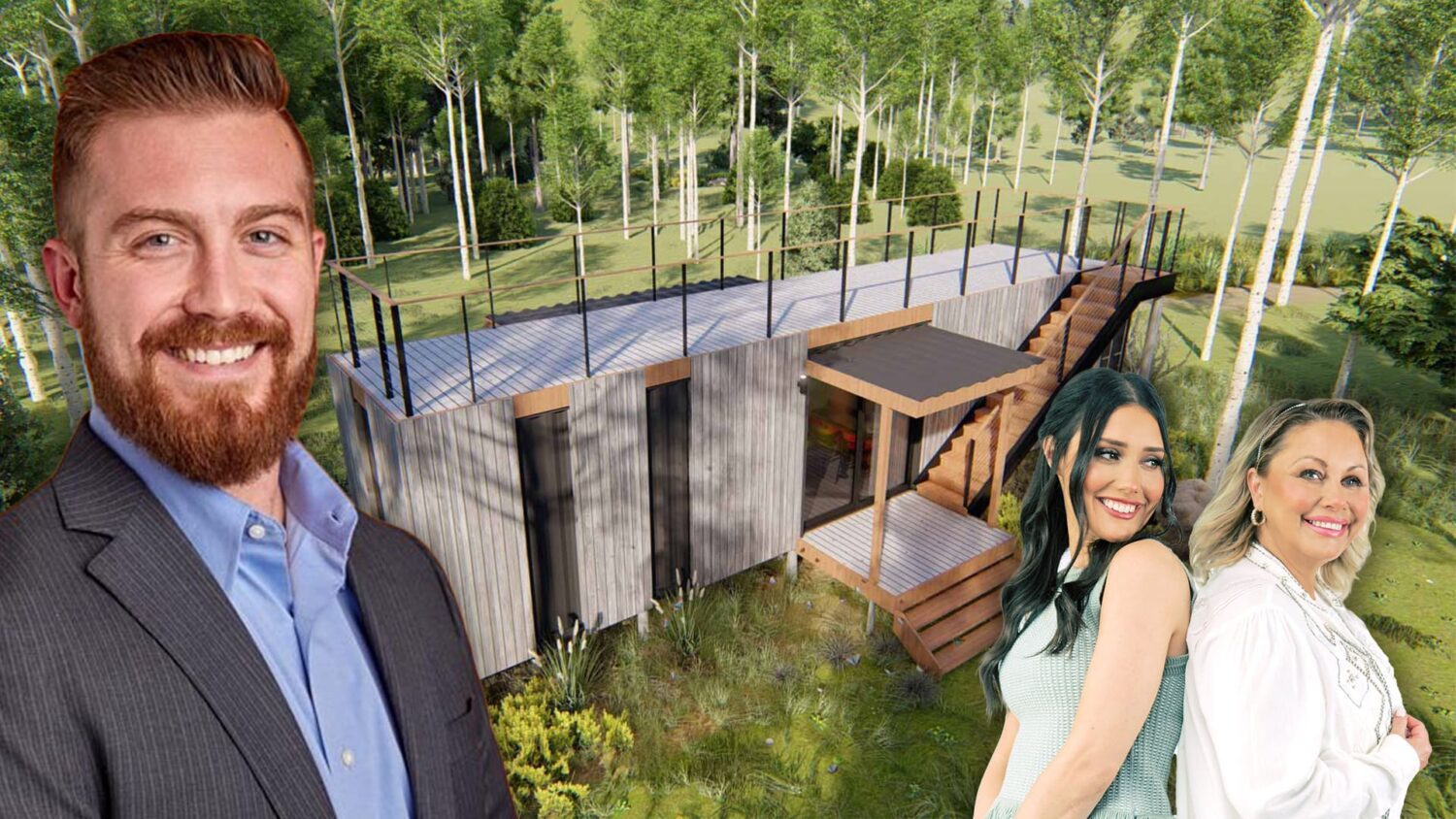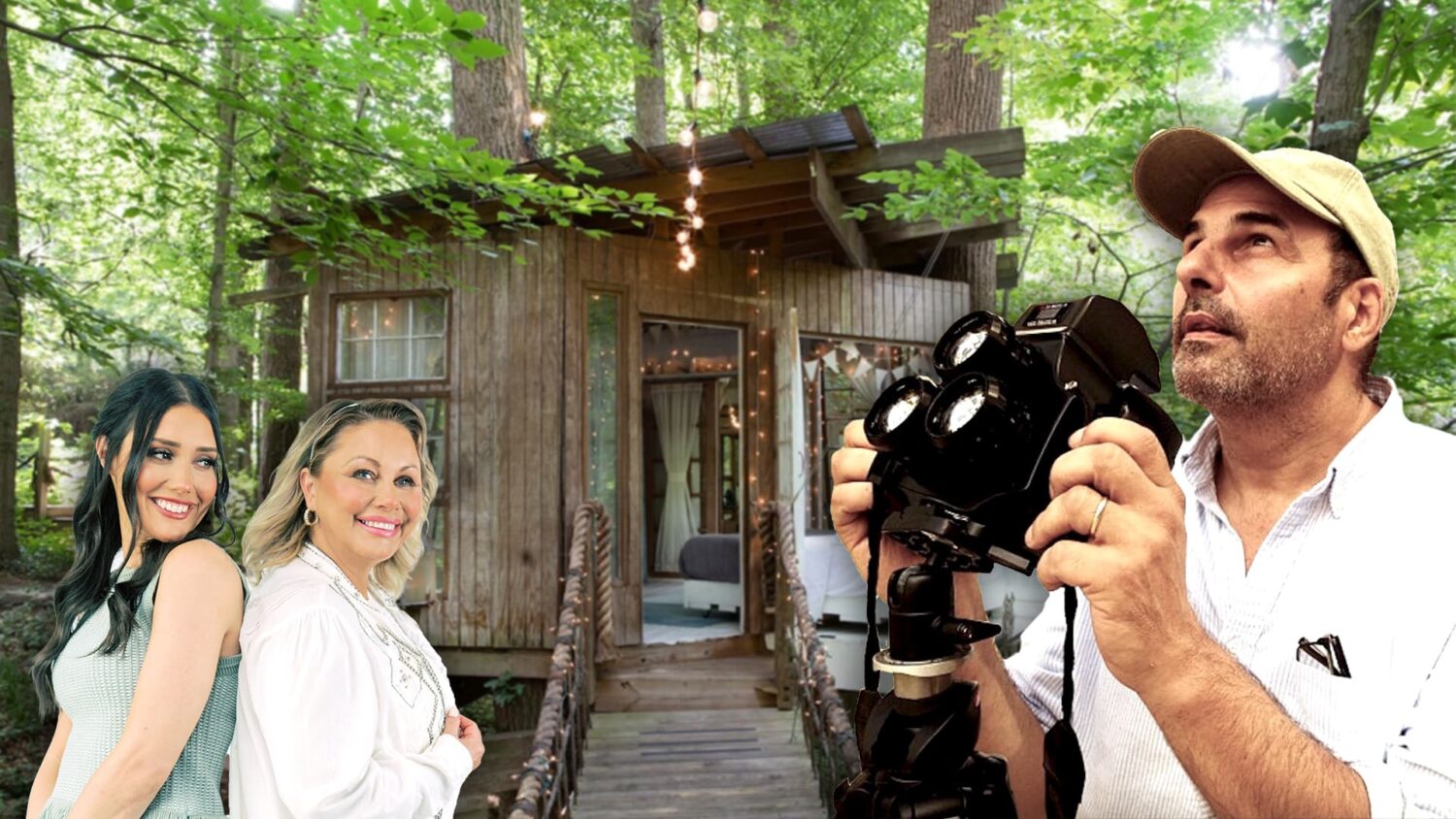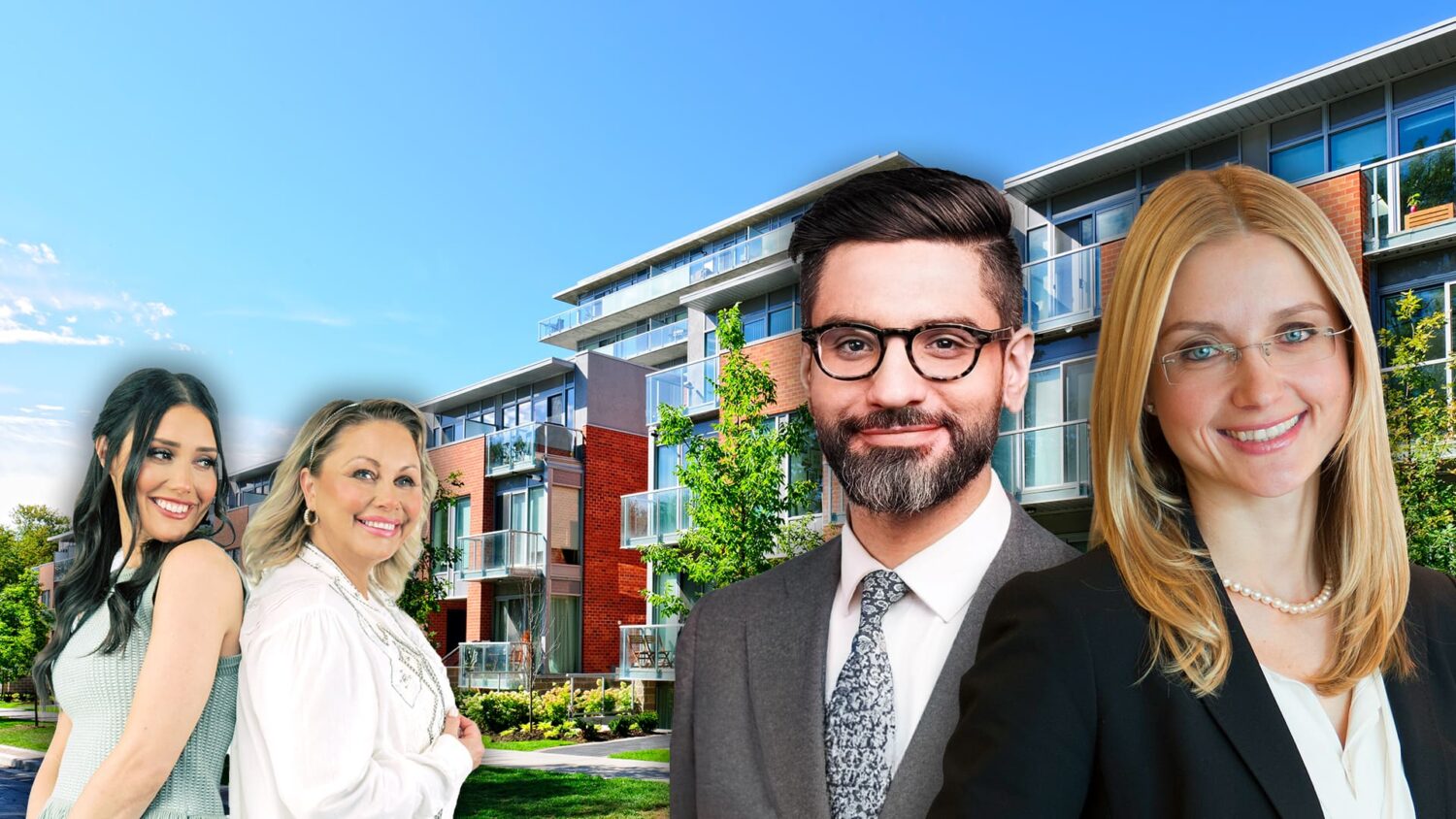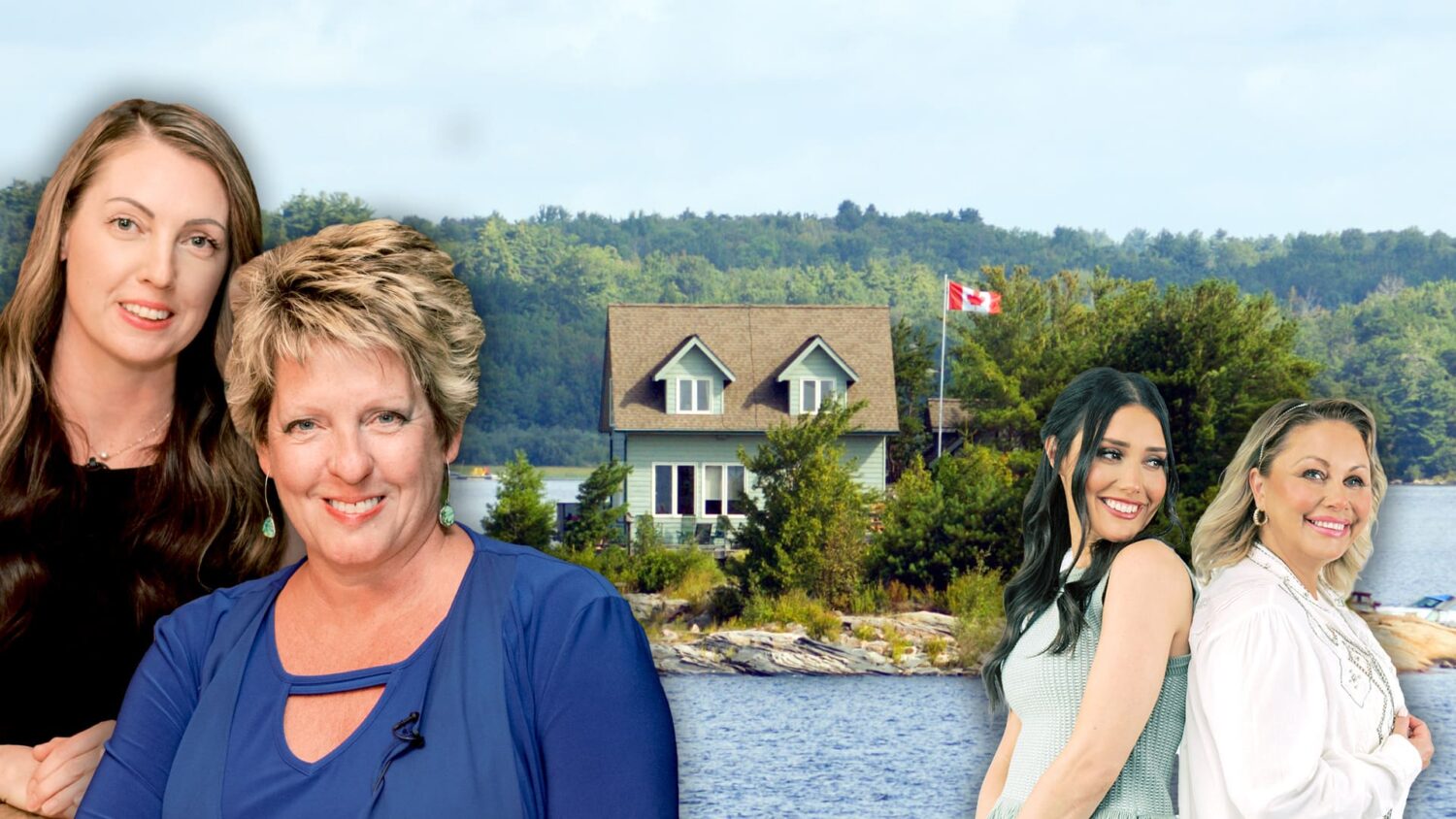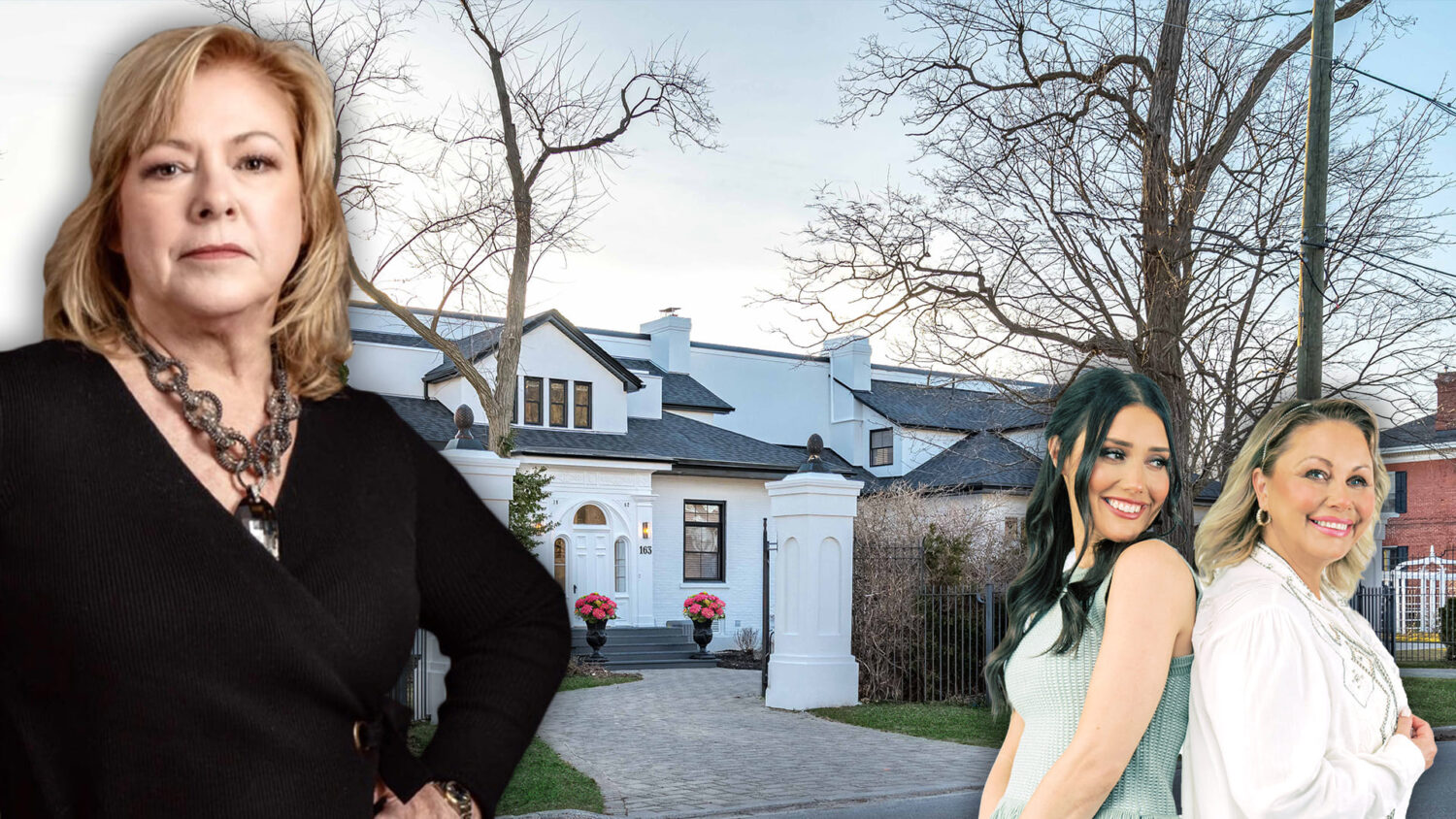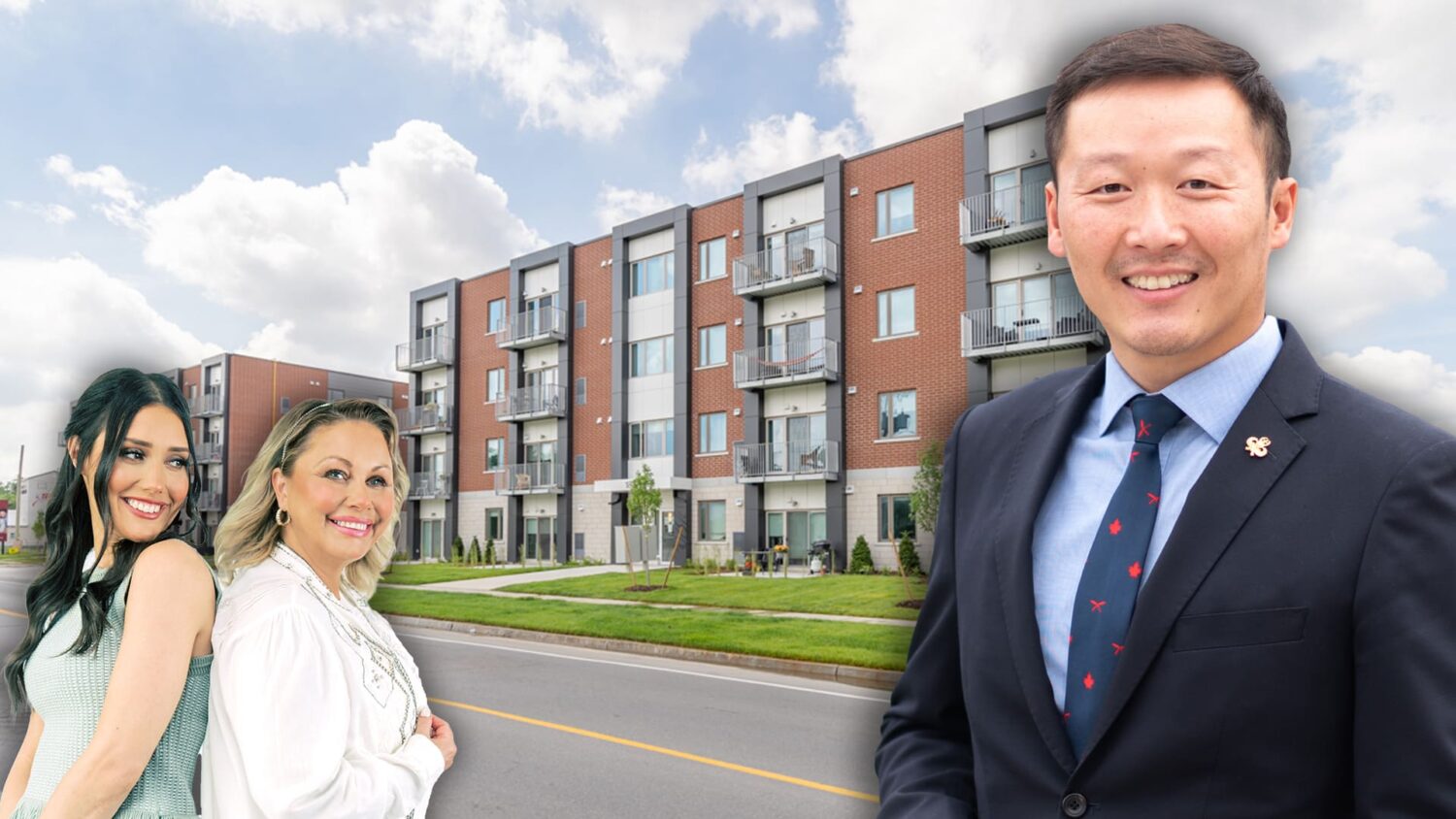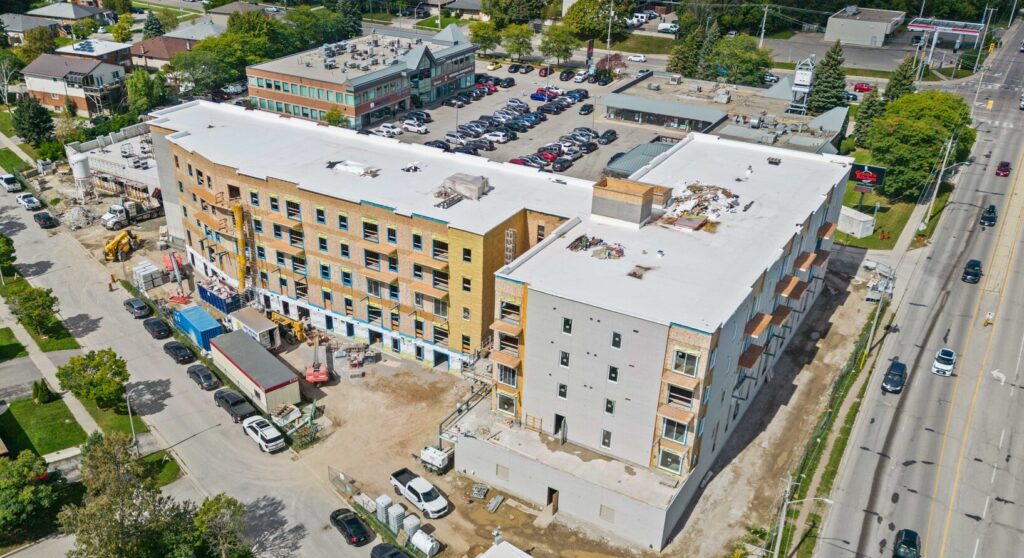Carmen and Jordan Campagnaro meet with Simeon Papailias and Jacob Campagnaro from REC Canada. Founded in 2000, REC Canada is a multiple award winning leader in real estate sales and consultation, spanning across all classes of real estate and investing. Simeon and Jacob are both seasoned realtors and investors and we welcome them back as a show sponsor to share knowledgeable insight when it comes to investing in the current market.
In this episode, we discuss some of the key strategies used to recession-proof real estate investment portfolios using multi-residential income properties. We talk about some of the hot spots to invest in right now as well as investing in retirement related real estate, a strategy that is quickly on the rise. This is an incredible information packed episode you won’t want to miss!
Web: RECcanada.com
Read the Full Episode Below
How To Recession Proof Your Portfolio S5 E1
(Note: This transcript has been modified for clarity purposes)
Carmen: Hi, I’m Carmen. This is Jordan. Welcome to 30 Minutes to Wealth, the show that teaches you how to build wealth through real estate.
Jordan: Today on the show we are so excited to be talking about how to recession proof your portfolio. Simeon and Jacob from REC Canada are on our show today, and they’re going to teach us some really amazing things about how to get into real estate and what to invest in. They are the sponsors of our show, we’re so grateful for that. Don’t go away.
BREAK
Jordan: Hi, I’m Jordan, and this is Carmen. Welcome back to 30 Minutes to Wealth Today. We’re here with our guys Jacob and Simeon. Guys, thanks so much for being on the show today.
Jacob: Yeah, thanks for having us on.
Simeon: Our pleasure.
Jordan: Yeah. We’re going to dig into some really exciting topics. How to recession proof your portfolio but to start with, how are you guys on the show? A couple of times have always been such a wealth of knowledge. You’re a sponsor of the show,
Carmen: Which is so appreciated. Thank you very much.
Jordan: Love to have you guys here. But for those maybe just tuning in, tell us a little bit about yourselves and maybe what you’re up to lately.
Simeon: Yeah, well, my name is Simeon Papailias the co-founder of the REC Canada Group, which again, a lot of the audience has seen us before. For those who haven’t, we are a 100% dedicated investment focused real estate group. We have a commercial division and a residential investment division, both of which amount to about 800 to 1000 transactions per year. So we represent a lot of investors. We have our finger on the pulse of the investment market, and no matter what the market conditions are, our insiders have come to trust our insight. And we gather that from people like yourselves, from other economists, and all our strategic partners. So we want to be, we strive to be the best source of insight and education on making great decisions in the real estate investing space.
Jordan: Yeah for sure.
Simeon: Jacob heads our entire commercial division, meaning that any asset above four doors at the minute you get into commercial real estate, that’s where he has his strengths, like his background, his education, his experience lie in really taking his clients and our clients through the entire due diligence process safely, accurately, where our clients win. And that’s what we strive to do.
Carmen: Yeah, you’ve done an amazing job, and I’m so proud that Jacob is actually part of your team. It’s amazing.”
Simeon: Jacob is actually part of your family.
All of them laugh together
Carmen: So I say yes.
Simeon: But that’s the amazing backstory, obviously. And then generations of real estate. And although we’ve spent so much time training Jacob to be the absolute resource he is today, he brought a wealth of knowledge with him, which is why it’s so natural. So kudos to your entire family for the generations of real estate. I had.
Carmen: Yeah. Well, thank you. Well, that was amazing.
Jordan: Yeah, what an intro. Well, today to start, we really want to talk about multifamily real estate. I know, Jake, that’s one of your specialties. And we’ve touched on this a little bit, but let’s kind of talk to us a little bit about why this makes for a good investment, why an investor should look at multifamily.
Jacob: Oh, yeah. So like today we’re going to be talking about recession proofing your portfolio. Right. And right off the bat, I put up my hand and said, hey, we got to talk about multifamily, right? I think it’s a fantastic investment, too. Recession proof. It doesn’t be it isn’t affected by the market the same way. Let’s take, you know, commercial retail or commercial offices. Right. Hard times, good times. People need to live, they need to rent. Yeah, right. Even more so. In the hard times, right? If you’re owning that lower middle class apartment building, that’s really when your vacancy is down. Yeah, right. People need to rent. Housing prices go up, housing prices come down. People are still going to rent.
Carmen: Absolutely. Right.
Jacob: Yeah. You know, even today we’re looking at across Canada vacancy rates under 2%.
Jordan: Yeah.
Carmen: Yeah, right.
Simeon: And that’s only and that’s in every single urban market, whether it’s Vancouver, Toronto, Calgary or Montreal.
Carmen: Same ones.
Simeon: The only common denominator is the fact that vacancy is well under 2%. Every single one of those markets. Yeah. So that whole Canadian shortage of supply is very real, which makes this asset class of owning multifamily so so in demand.
Carmen: And it’s so difficult to find, yeah. And you know, and immigration is another factor. You’ve got so many people coming into our country and housing, it’s a crisis. Yeah. And so I totally agree with you on this side with the multi residential, it’s always been my favorite multi rising commercial.
Jacob: So yeah, yeah. It’s just not being developed the same way single family is or you know, even commercial. Right. It’s a key asset class.
Jordan: Absolutely. Now with the market being so high, like where do people find these multifamily. Yeah. Jake, we’re in a good spot Jake.
Jacob: That’s, that’s basically my life. OK, yeah I know. So it’s, it’s like my thoughts to it is yes you can always buy in the population centers right. There’s going to be minimal inventory. It’s going to be the most expensive place to buy as well. Right. So you know when we’re in a recession time or a down market time
Carmen: Even even in an up market time
Jacob: Even in an upmarket time.
Carmen: Any time.
Jacob: Yeah. I like to look at tertiary markets.
Jordan: Yes, right.
Jacob: I like to go outside of the population centers. Yeah, right. And we look for key things. We’re going to look for employment nodes, transportation nodes and health care nodes.
Carmen: Yeah, right.
Jacob: Meaning OK. Is there a university campus? Right. And we’re not having student rentals, but everybody that works there, everybody that’s involved with that needs a place to live, right? Same with health care. Same with, you know, bedroom community, which essentially is, you know, that transportation node. Can we go from the small town into the big town quickly and efficiently? And those are the markets. Those are the key markets and my favorite markets to invest in.
Simeon: And we can see the evidence all over. If we look at the growth, if we want to pinpoint an Ontario, for example, and we look at Toronto versus the outside of Toronto, that the record growth over the past few years of 30 and 40 and 50% capital appreciation across all asset classes happened mostly centered in those tertiary markets that you’re referring.
Carmen and Jordan: Yes.
Simeon: If you want to look at Oshawa look at Kingston, Ontario, the hottest market in the entire province and nobody talks is it? It is, yeah. You want to look at Bell pilots out of Ottawa, Gary, to the north of Toronto, Hamilton to the west. Yeah. Hamilton is a story that you could write books about.
Carmen: Brantford.
Simeon: Bradford, Ontario, Paris, Woodstock. You got all these?
Jordan: Yeah, London.
Simeon: So all these locations, the reason they present such a tremendous opportunity is because as the people, as the residents of Toronto, of Oakville, Burlington, of Hamilton, as those markets appreciate, those residents saw the opportunity to cash in, not be debt free and be able to invest in real estate in a market that is 20, 30 minutes away from them, say as Toronto has very high income people come into Toronto to afford $2 million a 1.5 average, that is replacing in displacing someone who is moving to Burlington which used to be 800 is now one and one half.
Jacob: Yeah
Simeon: And then the person for Burlington is replacing Hamilton. They used to be 400 with 700, 700 to 400. So that whole drive to your qualify and natural evolution of any market is happening right in front of our eyes in the multifamily sector that we service and we service diligently is exactly, where the opportunity lies for stability inside our portfolio.
Carmen: Yeah, absolutely.
Jacob: Yeah. I always say it’s like a pebble in a pond. That’s right. Every time it ripples out. So let’s find that ripple before it happens or try. Right. That’s the smart investment.
Carmen: Yes, exactly. And you have to find the little communities that you know, most people wouldn’t even know about. And that’s where you have to see what you can find.
Jacob: Yeah. For example, look at Fergus. Yeah, we all know Fergus very well. We found a cottage up north, so we driven through it a million times. Yes, literally. And Fergus was this very small town, but it’s, what, 10 minutes? 50 minutes to Guelph and now you look at Elora right now. Elora and Ferguson almost merged because of the expansion they’ve had.And it’s just become this booming community.
Jordan: Yeah. It’s very cool to see these transitions of these small towns, and it’s been looked over, and now we’re all of a sudden.
Jacob: But it’s happening in our lifetime
Simeon: Like it’s happened in the last eight years. So I know about I mean, like, I remember driving through Elora with my motorcycle crew. We used to have a little club to go through the back roads, and the Elora was one of those like, let’s go to a Elora because it’s so beautiful. Well, you’re driving through like construction and subdivisions now and it’s like, what happened to Elora? Where’s the ice cream shop? So yeah, it’s very interesting to see the growth.
Carmen: For sure
Jordan: And maybe Simeon and you can shed some light on this. If an investor wants to get started investing in multifamily, how can they approach this?
Simeon: Yeah, I mean, we have a lot of systems in place and this is kind of where where we set where we believe we set ourselves apart in the marketplace is that we have set up a very systematized approach to this, because it is very exciting to hear us speak about multifamily with so much passion. It is because we invest in it. We’re investors too.
Jordan: Yeah. And we can see that passion. Oh, we absolutely love it.
Simeon: Well, Jacob puts every one of his dollars into real estate before he even earns it. But anyway. Not a lot of people love real estate more than this guy. But to do it, we’ve set up a system where it literally safeguards you from yourself. What can you expect from that? You’re going to be able to book a time where you have to speak about your goals. You have to say, I want a 20 unit apartment building. Well, if you’ve ever done it before, that may not be the best thing.
Jordan: Yes.
Simeon: Although it’s exciting or easy. Oh, no, I can just get a property manager. What if the margins aren’t there? Yeah. What if the plan is to renovate it first to escalate the rents. This is an asset class, where literally the sky’s the limit and every single opportunity presents different challenges.
Jacob: Yes.
Simeon: If we have enough time, I would love to share some of the challenges that we’ve gone through. But the best way to go about this is by booking what we call a real estate action plan, where Jacob and his team literally will take you through the process and really determine which type of investment is right for you.
Jacob: Yeah. And when we go in, we go deep into the investor themselves. Right. So what other investments do you have? Are you in stocks? Are you in crypto? Are you in commercial, residential, like we, you know, to really understand where we should put that investor and how we’re going to purchase.”
Carmen: We’ll hold that thought. Jacob, we have to go to break. And I’m really excited to share with our viewers what the requirements are to get involved into a commercial multi residential type investment. So don’t go away. We’ll be right back.
BREAK
Jordan: Hi, I’m Jordan, and this is Carmen. Welcome back to 30 Minutes to Wealth. We’re here with our guys Jacob and Simeon. Guys, thanks again so much for being here. For those that are just looping in, we were talking about investing in multifamily. So right before the break, we were talking about how you can go to your website. Lots of information between the two different resources.
Jacob: Yes.
Jordan: For those that are wanting to get involved in multifamily, what kind of criteria should they look to have? You know, is that something that you can help them identify when they contact you? Yeah.
Jacob: Yeah. And it’s and as Simeon mentioned earlier, we’re going to do the intake, right? That’s step one. But what does the investor need to know before we do the intake? Right? Is multifamily right for me right? Or is there because there’s a million investments? Yeah, right. And we can get into those in another episode but what you said Jordan with with the podcasting was actually a perfect segway into that right and I think investors should be educated right learn about multifamily. Yes I will teach you as much as I can possibly teach you but come in listening to the podcast right. Get excited about it.
Jordan: Understand what you kind of want to do before.
Simeon: So what’s the capital required like what is like if I have 30,000 can I buy an 18 unit building the answer is no?
Jacob: No.
Simeon: So, so you want to elaborate a little bit like yeah. So profile.
Jacob: Right, exactly. So okay, we come in scenario one, there’s two scenarios I’m going to, I’m going to put forth here, about scenario one is, you know, I’ve just sold my house, I’ve just refinanced my house or sold my cottage, whatever I come into. So I have some capital you’re going to be looking at anywhere from 20 to 30% down, meaning that’s where the cash that’s put down on the property. As of right now, the typical multifamily in Ontario, you’re looking at anywhere between 150,000 to 250,000 a door, right. So you can kind of do some math and put some pricing together there.
Simeon: Well why don’t we do that. I think we can because at that ten plex let’s call it on the mid range of 200,000 of doors.
Jacob: Yeah. Perfect.
Simeon: Exact $2 million if it’s 25, 20, 25 30%, let’s call it 25% again. Yeah, we’re talking about half a million bucks needs to go down. It’s just that closing cost you have closing costs it’s that simple. So unless you have access to actually 5 or $600,000 it’s not the right asset class. Yeah.”
Carmen: Yeah. So you can partner with somebody. You can. Right. There’s all sorts of ways of doing it and.”
Jacob: That’s exactly it. Right. And then you have the, the option two which I want to talk about which is a value add play. Yes. Right. I know you mentioned that a little bit earlier, but you know, so the investors who are very educated, very savvy in investing and that’s where the podcasts come in. Right. Understand what a value add play, what a BRRRR is, right.
Carmen: And what is a BRRRR?
Jacob: Well, so it’s a buy, reno, re rent and refinance, right? And repeat if you want.
All of them laugh
Jacob: And and essentially what you’re doing there is you’re going to be coming in with private money or B money or something of that nature, to acquire the property at a low cap rate normally because the rents are low. Right. And the banks are going to look at and say, I’m not funding etc.
Carmen: Now people are going to say, what’s a cap rate? I’m sorry, I’m going to again of course, because I just want to talk quickly. I guess.”
Jacob: Yep. You take it away. Cap rate. Sure. Yeah.
Simeon: Cap rate is the capitalization rate is what it actually stands for. And it’s the return of capital based on your purchase price. Versus the net income. So it’s that simple. It is the purchase price over net income. That’s gross capitalization. Yep. So to calculate that and begin let’s break this down to the basic principle.
Jordan: Yes.
Simeon: If the building is $2 million and the income is $200,000. If you divide one into the other, you’re going to get to your cap rate that’s right. Whether it’s a high cap rate or a low cap rate, you want to buy at the highest cap rate possible. So when you’re looking around and this is not easy concept to understand in 2 minutes, that we’re spending here.
Carmen: Yes.
Simeon: And I welcome and I invite everyone watching to understand the fundamentals of real estate on our website. So these resources and we can take all the time in the will. You can take all the time in the world to watch our content. I know we’ve explained this before on this very show.
Jordan: Exactly
Simeon: So the resources are there, capitalization rate you want to get at the highest possible and you want to sell it at the lowest. Yeah. That’s called Cap compression. So it is an actual investment method. Now it is my personal favorite. That’s what I do. But it’s also the most complex to understand and do. Not that it’s difficult, but you have to have done it before or you have to have the right people guiding you into the investment. That’s it.
Jordan: That’s right. Now, Simeon, we in general in this episode, we want to talk about how to recession proof your portfolio. One thing we really wanted to talk about was retirement homes and how this whole new segment of the population is coming into retirement and what kind of needs and opportunities there are going to be for investors. Can you talk to us a little bit about this?
Simeon: I mean, this is really, really big news right now.”
Jordan: Yeah.
Simeon: In 2022, we literally just had the census, the Canadian Census come out, which comes out every decade. And in the population of Canada, as predicted, is getting older. And that is not good news in any way, shape or form, meaning that if we’re not having enough children, we’re going to continue to rely on immigration to solve our workforce, our labor force, which just saw 20% of its skilled trades going to retirement.
Jordan: Wow!
Simeon: So when people say why are prices going up if we cannot build as a country if we can not have enough construction starts to replenish the supply and we need skilled trades to do so, we could not have 20% of bricklayers come off and not have a backfill.
Carmen: Yeah.
Simeon: So we just can’t have that. Yeah, it’s not functioning. And this is adding to the supply issues that were generated by the pandemic not long ago. So even past or even post-pandemic at this point when we have an aging labor force when we have these issues come to life, these also create massive opportunities because all of these people retiring are all going to have different needs and I’m talking to retirement homes, I’m talking to memory care homes, independent living for the seniors, assisted living for the for the seniors who need a little extra hand. Everybody’s to take income homes now there is no son or daughter readily available to help their parents anymore. Unaffordability of homes is driving both couples now to work. Whether they’re their partner has to work. The other one has to cover. It’s not the same setting of 50 years ago where you could just take your aging parent into your home and be able to help because we’re not available.
Carmen: You’re right. You’re so right.
Simeon: But we’re seeing this. We’re seeing tremendous opportunity. What are some of the opportunities that you’ve seen in the last few years? Because we’ve worked through some pretty significant projects.
Jacob: Yeah. Yeah, it’s a question. It’s a question I get when I’m working with investors, which is, you know, do you expect me to build a retirement home? Right. How do I invest in a retirement home? There’s many ways I’m going to touch on a few. I’m going to let Simeon touch on a few. But very, very simple. You can look at investing in, let’s say, a REIT. A real estate investment trust. Right.
Carmen: Yeah, I know about this!
All of them laugh
Jacob: And what you’re you know, so yes. You’re not directly owning, you know, the building. You’re not putting the bricks in yourself. But you do own the shares in that building. Right. And you are appreciating with that building, right? With that asset class, right. And that’s so important for people, especially the husband, wife, both working, you know, and then they’ve got to come home and then they have to think, OK, now I gotta go buy some land or I gotta go buy a building or something like that. There’s only so much time in a day. And for some people, that’s the right path.
Simeon: But let me put a super clear in the GTA, the greater Toronto area right now, there is a ten to one ratio of available beds to the demand. There’s a minimum two year waiting list. We’re not talking about government assisted living that’s a four year wait. So that the homes that are not up to par, not somewhere where you would want to put your loved one, but you have to have two to three year plus wait lists and they look like hospitals. But for cutting edge state of the art buildings, there’s just not enough built. So the major players in that game are scrambling to rezone land to get those in. So if you are interested in finding out more about how to invest in retirement homes, it is a very passive method of investment. It’s a very lucrative asset class and it’s by far one of the most stable investments you can make because the country factually has a massive demand. The country factually is aging faster than ever and the supply just doesn’t exist now.
Jordan: Well, you have me hooked on this.
All of them laugh
Simeon:For anybody, like just looking to just get into it. If you visit the Canada Mortgage Housing Corporation website, I’m not I can go to my website. I’m not talking about going to the Government of Canada website to look at the census.
Jordan:Oh, yeah.
Simeon: Go to CMHC, which is a Canada Mortgage Housing Corporation to see the average price per bed in retirement. They track the asset class literally too within 60 days because it’s such a hot, hot button issue. So everybody in this audience should be excited about it. The returns are well into the 20% per annum.
Carmen: So how is that through what?
Simeon: Whether they invest in a REIT that specializes in the space, right? Whether they invest in an actual home look where they can buy condominiums units, whether they invest in, in mortgage and private financing for the construction of these homes. Right. There’s a myriad of tools and opportunities. And there will be more and more as we progress through this.
Carmen: You’re right, absolutely.
Simeon: It wasn’t long ago that you’re affiliated with bought a site in southwestern Ontario.
You know, to put the site on blast, but that’s a tremendous play that you’re working.
Carmen: Yes. Yes.
Simeon: And how do we know that’s going to look in the next two years? What opportunities will arise out of that?
Jordan: That’s great for people to have this on their radar because it may not be the first thing they’re thinking of. It’s just really a great opportunity that’s presented here.
Simeon: The asset class itself is going to be shining, an opportunity left and right because we are so behind and there’s not enough people doing it. So there’s going to be a lot of money to be made in creating the infrastructure that will help the actual citizens of our country.
Jordan: Well, thank you guys so much for coming on and sharing with us. This was such an information packed episode, and I think everyone is going to get so much value here.
Carmen: I got value.
Jordan: And I love chatting with you guys. It is so engaging. You’re so passionate, but love it.
Jacob: Thank you so much for having me
Jordan: So if you’re interested in investing in some of these properties that we discussed today, you can contact Jacob directly at REC and for more information on real estate investing, you can go to 30 minutes to wealth to see the rest of our episodes.
Carmen: This was an amazing episode. Thanks again. Go create wealth.



